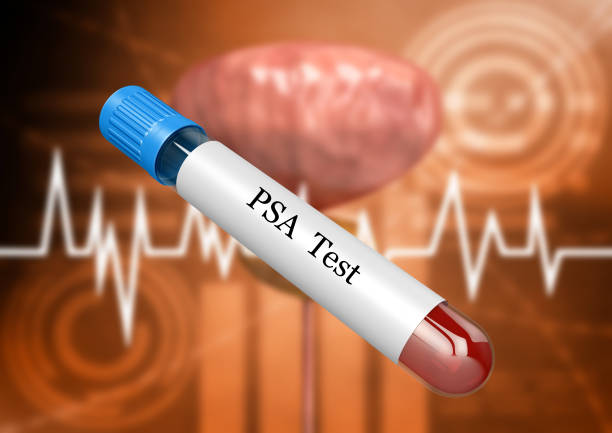
Prostate cancer is one of the most common cancers affecting men worldwide. Timely detection and accurate diagnosis are crucial for effective treatment and improved outcomes. In this regard, prostate-specific antigen (PSA) testing has revolutionised the early detection and monitoring of prostate cancer. PSA is a protein produced by both normal and cancerous prostate cells. It is released into the bloodstream and can be measured through a blood test. However, interpreting PSA levels can be complex, particularly when considering total PSA and free PSA.
What Is Total PSA?
Total PSA refers to the sum of both free PSA and PSA bound to other proteins in the blood. The main protein responsible for binding PSA is alpha-1-antichymotrypsin (ACT). Elevated total PSA levels can indicate the presence of prostate cancer, but they can also be caused by other non-cancerous conditions such as benign prostatic hyperplasia (BPH) or prostatitis. Therefore, total PSA alone is not a definitive diagnostic tool but serves as a screening test for further investigation.
Free PSA and Its Importance
Free PSA refers to the fraction of PSA that is not bound to proteins. It circulates in the bloodstream and can be measured alongside total PSA. The ratio of free PSA to total PSA provides valuable information in distinguishing between benign conditions and prostate cancer. In general, a higher percentage of free PSA is associated with a lower risk of cancer, while a lower percentage indicates a higher likelihood of malignancy.
Clinical Applications
- Early Detection: PSA screening, including measurement of free PSA, plays a vital role in the early detection of prostate cancer. Men with elevated total PSA levels but a higher percentage of free PSA are often considered at lower risk and may require less aggressive intervention, such as surveillance or repeat testing.
- Biopsy Decision-Making: Determining the need for a prostate biopsy can be challenging. Incorporating free PSA into the decision-making process can help refine the selection criteria. A lower percentage of free PSA in combination with elevated total PSA increases the probability of cancer and may warrant further investigation.
- Monitoring Treatment and Recurrence: Following prostate cancer diagnosis and treatment, monitoring PSA levels is crucial for assessing treatment response and detecting disease recurrence. Serial measurements of total and free PSA can provide insights into disease progression or regression, helping guide treatment decisions and monitoring long-term outcomes.
Limitations and Considerations
While total and free PSA levels provide valuable clinical information, they are not without limitations. Factors such as age, prostate size, and individual variations can influence PSA levels. Additionally, other conditions, including BPH or prostatitis, can also affect PSA values. Therefore, interpreting PSA results should always be done in the context of a patient's medical history, physical examination, and additional diagnostic tests, such as imaging and biopsies, when necessary.
Conclusion
Total and free PSA levels play a critical role in the diagnosis, monitoring, and management of prostatic cancer. They provide valuable insights into the likelihood of malignancy, helping guide treatment decisions and surveillance protocols. However, it is important to remember that PSA testing is not a standalone diagnostic tool, and further investigations are often necessary to confirm the presence of prostate cancer. Regular discussions with healthcare professionals and urologists are crucial for understanding and interpreting PSA testing can become even more refined, aiding in the early detection and improved management of prostate cancer, ultimately enhancing patient outcomes.

